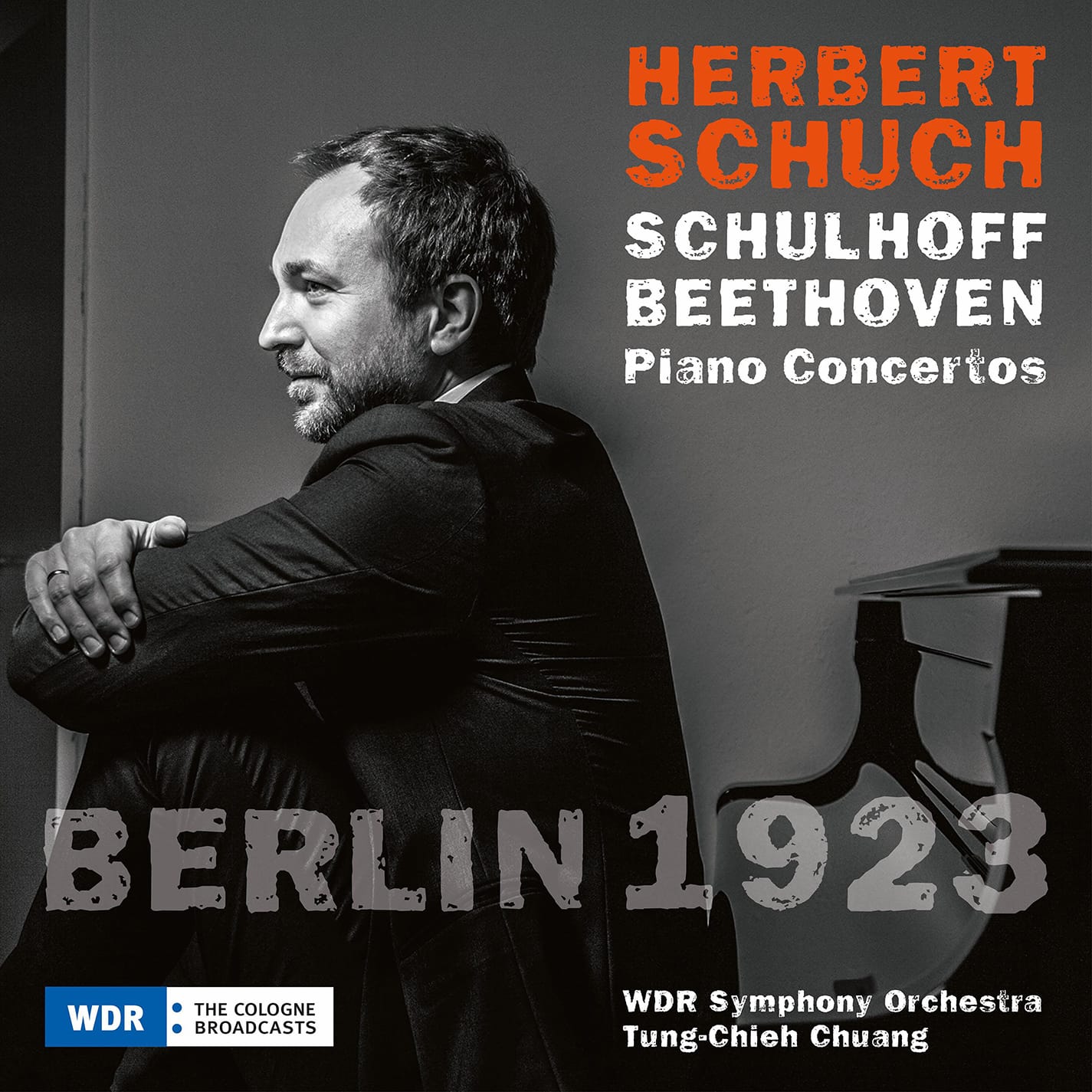Berlin 1923: Beethoven, Schulhoff & Schuch

What a fascinating disc this is! Both Beethoven and Ervin Schulhoff were innovators, but of course their music seems a million miles apart. And yet the two concertos are linked by Schulhoff's own concerto for the First Concerto. As to the ethos behind the disc, this is what the pianist, Herbert Schuch, has to say:
Indeed, it’s quite exciting to look at what was going on exactly 100 years ago – perhaps because 1923 doesn’t seem all that distant to us. Certain events and circumstances seem to mirror one another a century apart. From a musical point of view, Erwin Schulhoff’s piano concerto is a truly interesting work that has not attained the recognition it deserves… In terms of style, the piano concerto, composed between 11 June and 10 July 1923, is one of those works where Schulhoff radically deals with the dance types of jazz, which had crossed the Atlantic at the end of the First World War and spread out from Paris until taking all of Europe by storm… No other pair of composers could be more different – on paper – than these two. Schulhoff always took a decisive stance against traditionalism. Indeed, he may have been something of an iconoclast, but he was also a talented and well-trained pianist – a pianist who wanted to earn success in that very role. Of course, Schulhoff studied the Beethoven concertos, performed them, and ultimately also took the opportunity (like many other composers before him) to put his stamp on these works by writing his own cadenzas… …It was also in Berlin – in February 1923, to be exact – that Schulhoff conceived and worked out the cadenzas for the first four Beethoven piano concertos.
... and so in the first piece Beethoven's "First" Piano Concerto, Op. 21, we have Schuch playing a Beethoven cadenza; and then there is another performance of the first movement at the end of the disc that includes the Schulhoff cadenza. But this performance is not just here for novelty purposes: both are vibrant. The first two Beethoven concertos require great finger dexterity, and this Schuch has in spades:
I first came across Herbert Schuch in the London Piano Competition in 2005, for which he played Beethoven as well (the “Emperor” (review). I was substantially less taken by his Beethoven then than I am now. Schuch and the conductor, Taiwanese Tung-Chieh Chuang are in perfect accord. Chuang (currently Generalmusikdirektor at Bochum) is clearly a fine conductor, and the WDR - West German Radio - musicians give their not inconsiderable best for him.
The slow movement is a dream, and for all the eloquence of the WDR strings, it is Schuch's cantabile legato that is most impressive:
The finale is a joy, Schuch's clarity perfect for this piece; strings are perfectly disciplined by Chuang while Shcuch's treble/bass dialogues (teh hand crossings) are full of character:
When it comes to the Schulhoff cadenza (as remarked above, there is a second performance of the first movement at the end of the disc), it's remarkable: the techniques are what one might expect (semiquaver descents in thirds, and so on) but weaker into Schulhoff's tangy harmonic world:
The Schulhoff Concerto for Piano and Small Orchestra, Op. 43 is a wonderful piece. I've only heard it live once, some 22 years ago, in 2001 (Gottlieb Wallisch with the London Philharmonic Youth Orchestra under Louis Langrée at the Queen Elizabeth Hall in 2001: review). Schuch understands this piece completely. Listen to the Romantic sweep of the long piano solos in the first movement (and how Schulhoff colours it when the orchestra re-eners):
The WDR wind and trumpet seem on fire in the later portions of the movement. The piano is almost concertante at times (Schuch does refer in the booklet to some alterations he has made to aid the piano's audibility) The second movement, Sostenuto, is the polar opposite, contains a sort of ice-blue, frozen beauty. At 7"22, it is by some way the longest of the five movements, and Schulhoff seems to revel in the extra space, allowing for long rumination on themes:
Towards the end, Schulhoff creates the most amazing textures; in the third movement, the “Allegro alla jazz,” Schulhoff has a ball, and so do the players here, before in the fourth solo strings from the orchestra create a gossamer texture:
The finale feels like a manic march, with the large percussion department having an absolute ball. All credit to Schuch for negotiating the tricky, angular, rapid piano part in this short (1"15) movement:
If you want to explore Schulhoff's piano music further, an excellent choice would be Kathryn Stott's BIS disc Hot Music (see my review here)
This disc is available at Amazon here; and Schuch has previously recorded Beethoven (Piano Concerto No. 3) coupled with Ullmann (Amazon link). You can purchase the Stott/BIS solo piano disc here.
